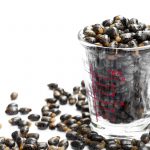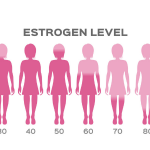Thyrotropin: Using the Marker to Manage Autoimmune Thyroiditis
Docere
Guillermo Ruiz, NMD
Alan Christianson, NMD
Thyrotropin, also known as thyroid-stimulating hormone (TSH), is the signal secreted from the thyrotrophic cells of the anterior pituitary in response to the release of thyrotropin-releasing hormone (TRH) by the hypothalamus. Thyrotropin acts as a proliferative signal to target cells primarily in the thyroid gland, but also on non-thyroidal target cells, including osteocytes, vascular endothelial cells, and hepatocytes.
Clinically, most physicians are aware of thyrotropin mainly through its diagnostic role in thyroid disease. Autoimmune thyroiditis is the most common reason for hypothyroid disease in developed countries, with a prevalence of up to 10%.1 It is characterized by an immune system attack on the thyroid that systemically damages the gland. Roughly 40-50% of those with autoimmune thyroiditis will have measurable thyroid antibodies, and in most affected individuals, the disease progresses to clinical hypothyroidism and atrophic or goitrogenic thyroiditis.
In this article we will move beyond the use of thyrotropin as a marker for hormone production and explore the importance of thyrotropin regulation in the management of autoimmune thyroid disease.
Diagnosis of Hypothyroidism
The conventional definition of hypothyroidism is an elevated serum level of thyrotropin along with low serum levels of thyroxine (T4). Symptoms may include (though are not necessary for diagnosis): thyroid enlargement (goiter), fatigue, infertility, dry skin, cold intolerance, voice changes, and – most importantly – a generalized slowing of metabolic processes (eg, constipation, weight gain). None of these symptoms is pathognomonic for hypothyroidism; thus, serological confirmation must be made in order to arrive at a diagnosis.
Many in the early stages of autoimmune thyroiditis can have the clinical presentation of hypothyroidism but lack the serologic findings of thyrotropin elevation and/or T4 or T3 suppression.2 The term “subclinical hypothyroidism” has been used in functional medicine to describe this state, yet this is a misuse of the term. Subclinical hypothyroidism is a partial hypothyroid state defined by a lack of hypothyroid symptoms (subclinical), an elevated thyrotropin, and a normal T4 or free T4 level.3
The goal of therapy should be to lower thyrotropin production to optimal levels. This will reduce stress on the thyroid (and thus reduce thyroid gland size), ameliorate symptoms of the disease, and – most importantly – prevent iatrogenic thyrotoxicosis that can result from overtreatment.
Causes of Autoimmune Thyroid Disease
In the state of hypothyroidism, elevated thyrotropin levels signal the thyroid gland to produce more T4 via increased iodine uptake. Additionally, thyrotropin acts as a cell growth stimulant and an endothelial growth factor. These effects increase the surface area and the volume of the thyroid gland, which can lead in some cases to changes such as nodules, calcifications, and goiter.4 These structural changes are clinically undesirable in that they can cause symptoms such as hoarseness, difficulty swallowing, and a sensation of a lump in the throat. For these reasons, reducing thyrotropin to optimal levels can, by itself, prevent and sometimes reverse structural pathology and often improve patients’ clinical manifestations.
Thyroid antibodies are produced within the thyroid tissue. These antibodies destroy healthy tissue via apoptosis and can prevent the iodination of thyroglobulin into active thyroid hormone. It has been demonstrated that with the complete removal of the thyroid or proper management of hypothyroidism with thyroid replacement therapy, the serum antibody concentrations decrease.5
Common Causes of Thyroid Ab Production
Autoimmune thyroid disease appears to be a perfect storm of events that occur as a result of genetics, toxicologic exposure, chronic immunologic stressors, and acute infectious disease.
Infections can cause the production of thyroid antibodies through molecular mimicry. Epstein-Barr virus (EBV), hepatitis C, and other infections can precipitate the production of thyroid antibodies.6
Genetics predisposes individuals to autoimmune thyroiditis. There is sufficient data suggesting that autoimmune thyroid disease clusters among family members; for example, having a first-degree relative with the disease increases the chances of developing it.7
Acute stress can also precipitate the immune system to produce thyroid antibodies. This could be a result of an acute spike of cortisol,8 and might explain the 15% increase in thyroid dysfunction during pregnancy.9
After the delivery of a child, physiological changes occur in the woman’s body. The immune system undergoes suppression right before delivery, and upon its return is usually a little overactive.10 This can activate the faulty mechanisms that create autoimmune thyroid disease.
Management of Autoimmunity
Along with structural harm to the thyroid, continued stimulation of thyroid hormone production by elevated thyrotropin exacerbates the immune response against thyroperoxidase and thyroglobulin.5
It has been argued that thyrotropin elevation above 2.5 or 3.0 µIU/mL may perpetuate the autoimmune process that can lead to hypothyroidism. This phenomenon has been called the hypothyroid-autoimmune loop and can be one of the reasons for benefit from thyroid replacement in the early stages of Hashimoto’s thyroiditis.
Conservative initiation of thyroid replacement, with the goal of reducing thyrotropin levels, should be the first line of treatment. A dose of approximately 1.6 µg/kg body weight per day (eg, 112 µg/day of levothyroxine or its equivalent in a 70-kg adult) is usually sufficient to begin reduction of serum thyrotropin levels.11 Importantly, lean body mass is a better measure than total body weight in the initiation of treatment; for this reason, conservative treatment (ie, a low standard dose of about 25-88 µg of levothyroxine or its equivalent) is preferred over dosing based on symptoms, laboratory findings, or the practitioner’s prior clinical experience.12 Although this is a good starting point, it is worth mentioning that pregnancy, gender, and age should be considered when initiating thyroid hormone treatment.13 It is recommended that autoimmune thyroiditis in these patient populations be referred to practitioners with added training or experience treating the condition.
Thyroid medication should be taken on an empty stomach, ie, 1 hour away from food or coffee. A study by Benvega et al demonstrated that coffee can impair absorption of T4 by up to 36%, even when consumed many hours after thyroid medication is ingested.14 For this reason, patients should be encouraged to abstain from food (especially bran, oatmeal, and other high-fiber foods) and beverages other than water (especially orange juice, coffee) when taking thyroid medication.
As soon as 2 weeks after initiating thyroid replacement therapy, symptom reduction may be seen for subjective symptoms such as fatigue or mood alterations. First, serum thyroid hormone levels increase, and then thyrotropin levels begin to drop. Because of this delay, thyrotropin levels should not be expected to normalize until at least 6 weeks after initiating treatment. If thyrotropin levels are not properly suppressed (lower limit=0.4 µIU/mL) after 6 weeks of treatment, conservative increases of thyroid hormone, in the range of 12 µg to 25 µg of levothyroxine per day, should be considered, and the patient retested after another 6 weeks.
Because of significant intra-individual variation in thyroid hormone parameters, including thyrotropin, it has been suggested that population-based reference ranges may be of limited use. Erden et al, who examined such fluctuations in serial measurements of healthy Turkish subjects every 2 weeks for 6 weeks, observed means serial blood measurements of TSH in a range of 0.36-1.91 µIU/mL.15 Based on these findings and our own clinical experience, we recommend an optimal TSH range of 0.5-1.5 µIU/mL. This range helps prevent both over-prescribing of thyroid hormones and potential thyrotropin over-suppression; it also gives us some room to help suppress thyrotropin in patients with nodules.
Avoiding Overdosing of Thyroid Hormone
Conservative management of autoimmune thyroid disease is important in preventing iatrogenic hyperthyroidism. The most common symptoms of this are anxiety, worsening of fatigue, osteopenia, cardiac disease, and even death.16
Subclinical hyperthyroidism is a state in which patients have a mildly or completely suppressed thyrotropin (ie, <0.4 µIU/mL), no elevations in T3 or T4 hormones, and no apparent clinical symptoms. Patients in this group are shown to have higher risks for atrial fibrillation, heart failure, bone fractures, spontaneous progression to overt hyperthyroidism, and all-cause mortality.17 Similar risks are documented in cancer patients who are prescribed exogenous thyroid replacement with the goal of complete thyrotropin suppression.18 For these reasons, thyrotropin should be closely monitored. Suppression of thyrotropin below <0.4 predisposes patients to increased risk of arrhythmias as well as bone fractures.19
Thyrotropin suppression appears to promote the same type and rate of sequelae regardless of whether it is caused by endogenous thyroid secretion or exogenous thyroid hormone ingestion. Furthermore, exogenous thyroid hormone ingestion produces similar adverse effects regardless of whether the therapy is T4-based, T3-based, combination, natural desiccated thyroid, compounded, or an OTC thyroid glandular.
It is worth noting that the risk of thyrotropin suppression is not attenuated by monitoring basal body temperature or serum levels of free T3 or total T3. Basal body temperature is regulated in part by thyroid hormone; however, thyrotoxicosis does not lead to a predictable, linear rise in basal body temperature.20 Normal T3 levels correlate with earlier states of thyrotoxicosis compared to T3 elevation, but even the early stage carries risks.
Conclusion
There is much confusion about the proper management of autoimmune thyroid disease. As we explain in this article, proper management aims to reduce symptoms, lower the risk of onset of autoimmune comorbidities, and manage structural pathology. The treatment and appropriate dosing should be guided by serological analysis, with special focus on and interpretation of thyrotropin levels and appropriate suppression of this very important hormone. Treatment should be conservative and special care should be taken to avoid complications that could arise from iatrogenic hyperthyroidism caused by excessive administration of replacement thyroid hormone.
References:
- Hollowell JG, Staehling NW, Flanders WD, et al. Serum TSH, T(4), and thyroid antibodies in the United States population (1988 to 1994): National Health and Nutrition Examination Survey (NHANES III). J Clin Endocrinol Metab. 2002;87(2):489-499.
- Almandoz JP, Gharib H. Hypothyroidism: Etiology, Diagnosis, and Management. Med Clin North Am. 2012;96(2):203-221.
- Lamine F, De Giorgi S, Marino L, et al. Subclinical hypothyroidism: new trials, old caveats. Hormones. 2018;17(2):231-236.
- Hoffmann S, Hofbauer LC, Scharrenbach V, et al. Thyrotropin (TSH)-Induced Production of Vascular Endothelial Growth Factor in Thyroid Cancer Cells in Vitro : Evaluation of TSH Signal Transduction and of Angiogenesis-Stimulating Growth Factors. J Clin Endocrinol Metab. 2004;89(12):6139-6145.
- McGregor AM, Ibbertson HK, Smith BR, Hall R. Carbimazole and autoantibody synthesis in Hashimoto’s thyroiditis. Br Med J. 1980;281(6246):968-969.
- Heufelder AE, Wenzel BE, Gorman CA, Bahn RS. Detection, cellular localization, and modulation of heat shock proteins in cultured fibroblasts from patients with extrathyroidal manifestations of Graves’ disease. J Clin Endocrinol Metab. 1991;73(4):739-745.
- Villanueva R, Greenberg DA, Davies TF, Tomer Y. Sibling recurrence risk in autoimmune thyroid disease. Thyroid. 2003;13(8):761-764.
- Bendtzen K, Buschard K, Diamant M, et al. Possible role of IL-1, TNF-alpha, and IL-6 in insulin-dependent diabetes mellitus and autoimmune thyroid disease. Thyroid Cell Group. Lymphokine Res. 1989;8(3):335-340.
- Führer D, Mann K, Feldkamp J, et al. Thyroid dysfunction in pregnancy. Dtsch Med Wochenschr. 2014;139(42):2148-2152. [Article in German]
- Somerset DA, Zheng Y, Kilby MD, et al. Normal human pregnancy is associated with an elevation in the immune suppressive CD25+ CD4+ regulatory T-cell subset. Immunology. 2004;112(1):38-43.
- Roos A, Linn-Rasker SP, van Domburg RT, et al. The starting dose of levothyroxine in primary hypothyroidism treatment: a prospective, randomized, double-blind trial. Arch Intern Med. 2005;165(15):1714-1720.
- Santini F, Pinchera A, Marsili A, et al. Lean Body Mass Is a Major Determinant of Levothyroxine Dosage in the Treatment of Thyroid Diseases. J Clin Endocrinol Metab. 2005;90(1):124-127.
- Kashi Z, Bahar A, Akha O, et al. Levothyroxine Dosage Requirement During Pregnancy in Well-Controlled Hypothyroid Women: A Longitudinal Study. Glob J Health Sci. 2015;8(4):227-233.
- Benvenga S, Bartolone L, Pappalardo MA, et al. Altered Intestinal Absorption of L-Thyroxine Caused by Coffee. Thyroid. 2008;18(3):293-301.
- Erden G, Barazi AO, Tezcan G, Yildirimkaya M. Biological Variation and Reference Change Values of TSH, Free T3, and Free T4 Levels in Serum of Healthy Turkish Individuals. Turk J Med Sci. 2008;38(2):153-158.
- Fahey TJ. Serum Thyroid-Stimulating Hormone Concentration and Morbidity from Cardiovascular Disease and Fractures in Patients on Long-Term Thyroxine Therapy. Yearb Surg. 2011;2011:169-170.
- Donangelo I, Suh SY. Subclinical Hyperthyroidism: When to Consider Treatment. Am Fam Physician. 2017;95(11):710-716.
- Do Cao C, Wémeau JL. Risk-benefit ratio for TSH- suppressive Levothyroxine therapy in differentiated thyroid cancer. Ann Endocrinol (Paris). 2015;76(1 Suppl 1):1S47-1S52.
- Fahey TJ. Serum Thyroid-Stimulating Hormone Concentration and Morbidity from Cardiovascular Disease and Fractures in Patients on Long-Term Thyroxine Therapy. Yearb Surg. 2011;2011:169-170.
- Kelly GS. Body temperature variability (Part 2): masking influences of body temperature variability and a review of body temperature variability in disease. Altern Med Rev. 2007;12(1):49-62.
 Guillermo Ruiz, NMD, is a graduate of the Southwest College of Naturopathic Medicine. Dr Ruiz aims to use his research to advance naturopathic medicine using an evidence-based approach, and he focuses on finding evolutionary connections between our modern and traditional healthcare systems. He currently practices at Integrative Health in Scottsdale, AZ, under the mentorship of Dr Alan Christianson. Dr Ruiz specializes in endocrinology, autoimmune disease, and GI health. His hobbies include researching, learning, practicing, and teaching the benefits of adhering to an appropriate evolutionary diet.
Guillermo Ruiz, NMD, is a graduate of the Southwest College of Naturopathic Medicine. Dr Ruiz aims to use his research to advance naturopathic medicine using an evidence-based approach, and he focuses on finding evolutionary connections between our modern and traditional healthcare systems. He currently practices at Integrative Health in Scottsdale, AZ, under the mentorship of Dr Alan Christianson. Dr Ruiz specializes in endocrinology, autoimmune disease, and GI health. His hobbies include researching, learning, practicing, and teaching the benefits of adhering to an appropriate evolutionary diet.
***
 Alan Christianson, NMD, is a Scottsdale, AZ, based naturopathic medical doctor who specializes in natural endocrinology with a focus on diabetes, Hashimoto’s thyroiditis, and adrenal disorders. Dr Christianson was a member of the premier class of SCNM, graduating in 1996. He has been actively practicing in Scottsdale since 1996 and is the founding physician behind Integrative Health. He is a NY Times bestselling author of The Metabolism Reset Diet, The Adrenal Reset Diet, and the bestselling Complete Idiot’s Guide to Thyroid Disease. Dr Christianson is the founding president of the Endocrine Association of Naturopathic Physicians, the first medical specialty board dedicated to naturopathic endocrinology.
Alan Christianson, NMD, is a Scottsdale, AZ, based naturopathic medical doctor who specializes in natural endocrinology with a focus on diabetes, Hashimoto’s thyroiditis, and adrenal disorders. Dr Christianson was a member of the premier class of SCNM, graduating in 1996. He has been actively practicing in Scottsdale since 1996 and is the founding physician behind Integrative Health. He is a NY Times bestselling author of The Metabolism Reset Diet, The Adrenal Reset Diet, and the bestselling Complete Idiot’s Guide to Thyroid Disease. Dr Christianson is the founding president of the Endocrine Association of Naturopathic Physicians, the first medical specialty board dedicated to naturopathic endocrinology.










